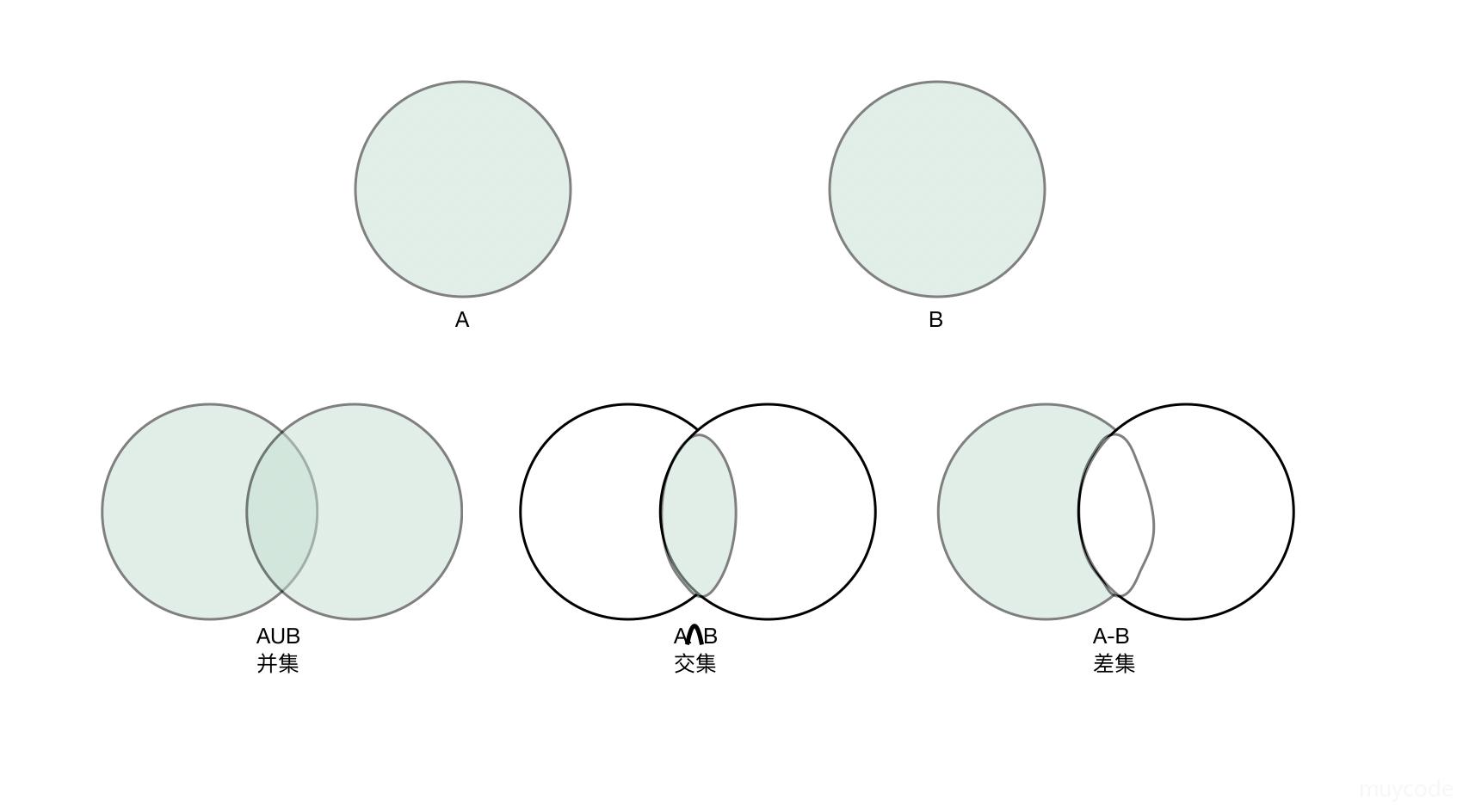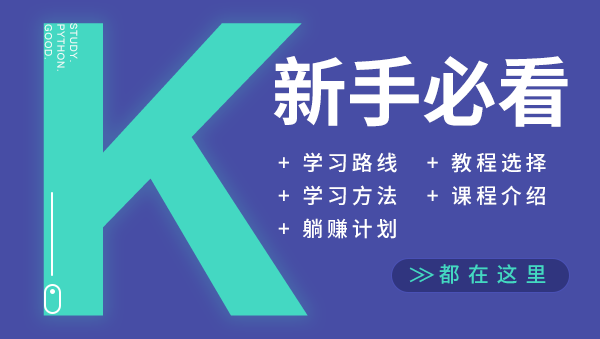集合这种数据类型和我们数学中所学的集合很是相似,数学中堆积和的操作也有交集,并集和差集操作,python集合也是一样。

一、交集操作
1.使用intersection()求交集:
可变集合和不可变集合求交集的时候,用什么集合调用交集方法,返回的结果就是什么类型的集合。
set7 = {'name', 18, 'python2', 'abc'}
set8 = frozenset({'name', 19, 'python3', 'abc'})
res = set7.intersection(set8) # {'abc', 'name'} <class 'set'>
print(res, type(res))
res = set8.intersection(set7) # frozenset({'abc', 'name'}) <class 'frozenset'>
print(res, type(res))
返回结果:
{'abc', 'name'} <class 'set'>
frozenset({'abc', 'name'}) <class 'frozenset'>
2. 使用位运算&符求交集
set5 = {'name', 18, 'python2', 'abc'}
set6 = {'name', 19, 'python3', 'abc'}
set7 = {'name', 18, 'python2', 'abc'}
set8 = frozenset({'name', 19, 'python3', 'abc'})
res = set5 & set6
print(res, type(res))
res = set7 & set8
print(res, type(res))
res = set8 & set7 # 谁在前,返回结果就和谁是同样类型的集合
print(res, type(res))
返回结果:
{'abc', 'name'} <class 'set'>
{'abc', 'name'} <class 'set'>
frozenset({'abc', 'name'}) <class 'frozenset'>
3.intersection_update()方法计算出交集之后会把结果赋值给原有的集合,属于一种更改,所以不适用于不可变集合
set7 = {'name', 18, 'python2', 'abc'}
set8 = frozenset({'name', 19, 'python3', 'abc'})
res = set7.intersection_update(set8) # 没有返回值
print(set7, type(set7)) # 没有返回值,直接打印被赋值集合
res = set8.intersection_update(set7) # 不可变集合没有intersection_update方法
print(res, type(res))
返回结果:
{'abc', 'name'} <class 'set'>
AttributeError: 'frozenset' object has no attribute 'intersection_update'
4.使用intersection()求集合和其他数据类型的交集时intersection()会把其他数据类型直接转为集合。
str1 = 'python'
list1 = [1, 2, 3, 18]
tup1 = (1, 2, 3, 18)
dict1 = {'name': 'Tom', 'age': 18, 'love': 'python'}
set10 = {'name', 18, 'python', 'abc', 'p'}
print(set10.intersection(str1)) # 返回:{'p'}而不是{'python'},因为str1转成集合为:{'y', 't', 'p', 'o', 'n', 'h'}
print(set10.intersection(list1))
print(set10.intersection(tup1))
print(set10.intersection(dict1))
返回结果:
{'p'}
{18}
{18}
{'name'}
二、并集操作
1.使用union()求并集
set5 = {'name', 18, 'python2', 'abc'}
set6 = {'name', 19, 'python3', 'abc'}
res = set5.union(set6)
print(res, type(res))
返回结果:
{'python2', 'abc', 18, 19, 'python3', 'name'} <class 'set'>
2.使用逻辑或 | 求并集
set5 = {'name', 18, 'python2', 'abc'}
set6 = {'name', 19, 'python3', 'abc'}
res = set5 | set6
print(res, type(res))
返回结果:
{'abc', 'python2', 'name', 'python3', 18, 19} <class 'set'>
3.使用update()求并集,只能作用域可变集合
set5 = {'name', 18, 'python2', 'abc'}
set6 = {'name', 19, 'python3', 'abc'}
res = set5.update(set6) # 有黄色波浪线表示这个函数没有返回值
print(set5, type(set5))
返回结果:
{'python2', 'python3', 18, 'abc', 19, 'name'} <class 'set'>



